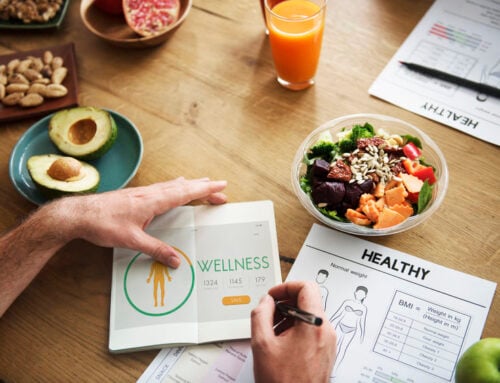Good And Bad Cholesterol
Many adults know that high cholesterol can be bad for overall health. Low-density lipoprotein (LDL) cholesterol is the type most people are aware of and told to avoid. LDL is casually referred to as bad cholesterol and is often a contributing cause of atherosclerosis and an increased risk of suffering a heart attack, stroke, or peripheral artery disease (PAD). But another type of cholesterol is known as high-density lipoprotein (HDL). Unlike LDL, HDL can work to prevent heart attacks or strokes, as well as aid in eliminating some LDL. Thankfully, a healthy diet composed of the following recommended foods can help people to boost HDL levels and improve cardiovascular health.

Increase whole-grain consumption
Whole grains are a popular starting point for anyone interested in improving HDL levels. Specifically, this food category is rich in soluble fiber, a vital component that helps reduce LDL. By lowering overall LDL levels in the body, HDL will naturally have a higher concentration. For best results, experts recommend aiming for two servings of whole grains daily. Popular options include brown or wild rice, bran, oatmeal, and cereal.
More fatty fish
Fatty fish are a favorite for health-conscious individuals because the category is rich in omega-3 fatty acids. Omega-3s are responsible for several essential nutrients the body needs to perform at optimal levels. Along with being rich in antioxidants, the building block can also help to reduce LDL levels. Focus on salmon, albacore tuna, sardines, rainbow trout, and mackerel. For best results, try to get two servings of fatty fish, also known as oily fish, per week.
Beans and legumes
Consider incorporating more beans and legumes into a diet plan for people looking to boost soluble fiber intake. Like whole grains, the increased soluble fiber helps rid the body of LDL cholesterol. Great options include kidney beans, lentils, black beans, and black-eyed peas.
Tasty high-fiber fruits
Banishing bad cholesterol doesn’t have to be an usavory experience. For people who want a sweet treat, consider adding more high-fiber fruits instead of sweet empty-calorie picks. Specifically, focus on high fiber options such as apples, prunes, and pears.
Get more healthy fats
While most fat sources should be avoided to reduce cholesterol, some fats can benefit. Specifically, options like avocados and olive oil are excellent sources for controlling LDL cholesterol. Avocados are especially rich in folate and monounsaturated fat, two critical nutrients that aid in maintaining HDL levels.
Consider adopting the Mediterranean diet
Individuals solely focused on boosting health and reducing cholesterol often benefit greatly by adopting the Mediterranean diet. A heart-healthy diet is modeled after foods eaten by people in countries bordering the Mediterranean Sea and is excellent at boosting HDL function. The meal plan prioritizes dairy, fish, and poultry over red meats.
Eating for health
Eating habits can be challenging initially but is vital to improving health outcomes. More importantly, people should remember that eating healthy can still be incredibly flavorful and enjoyable. However, a reliance on leaner cuts of meat and a reduction in unhealthy fats is critical. People concerned about diet and cholesterol should speak to a physician or registered dietician.




